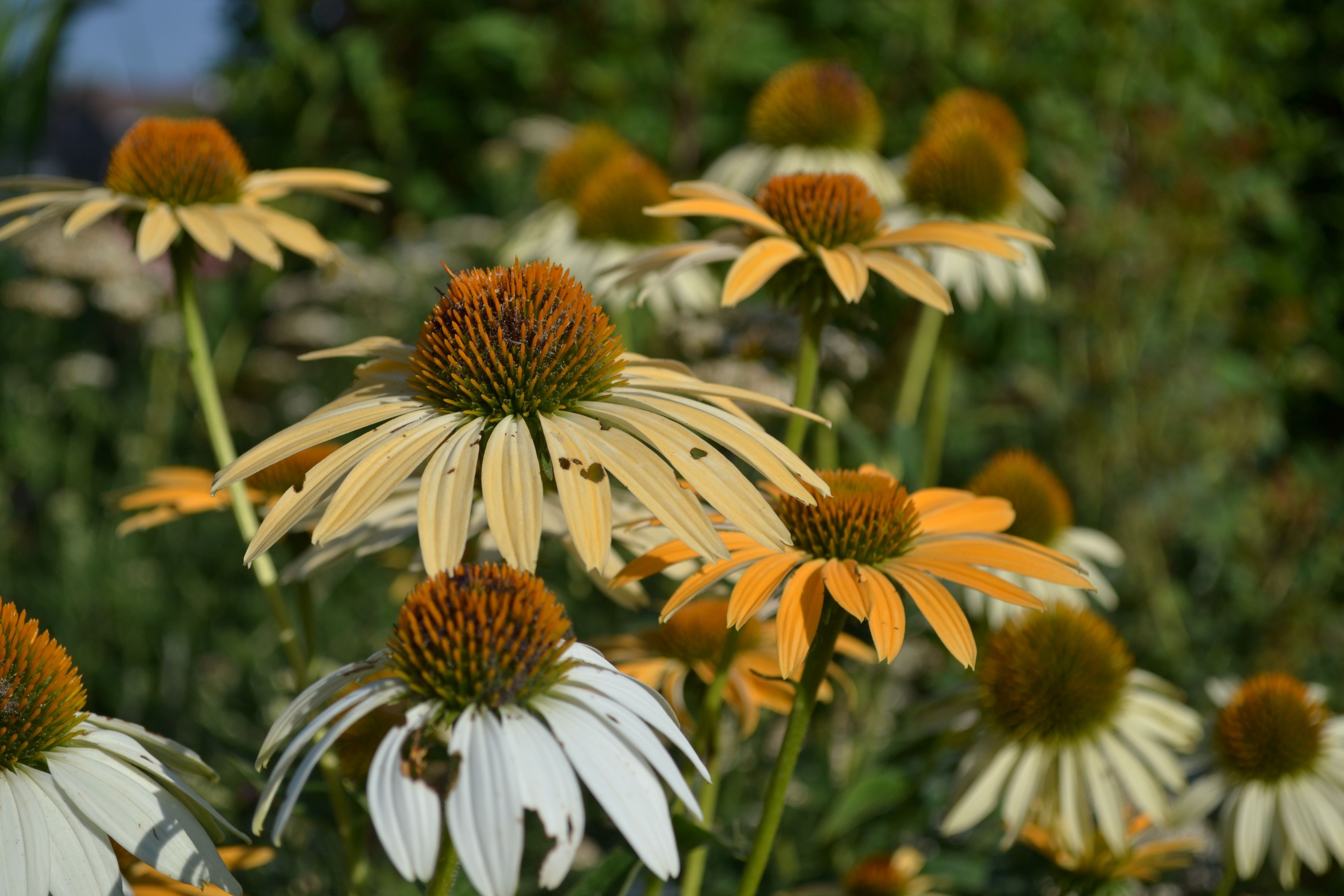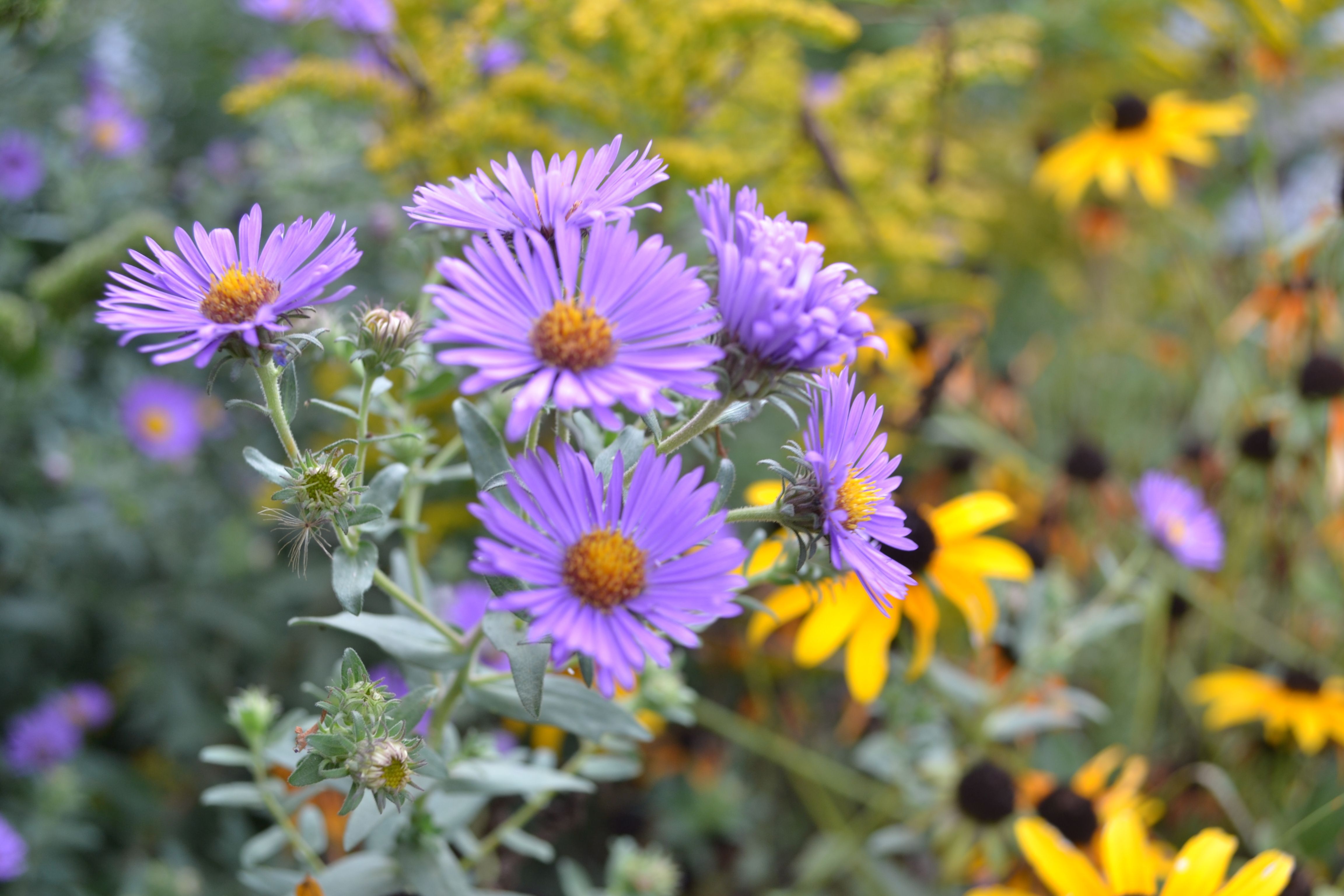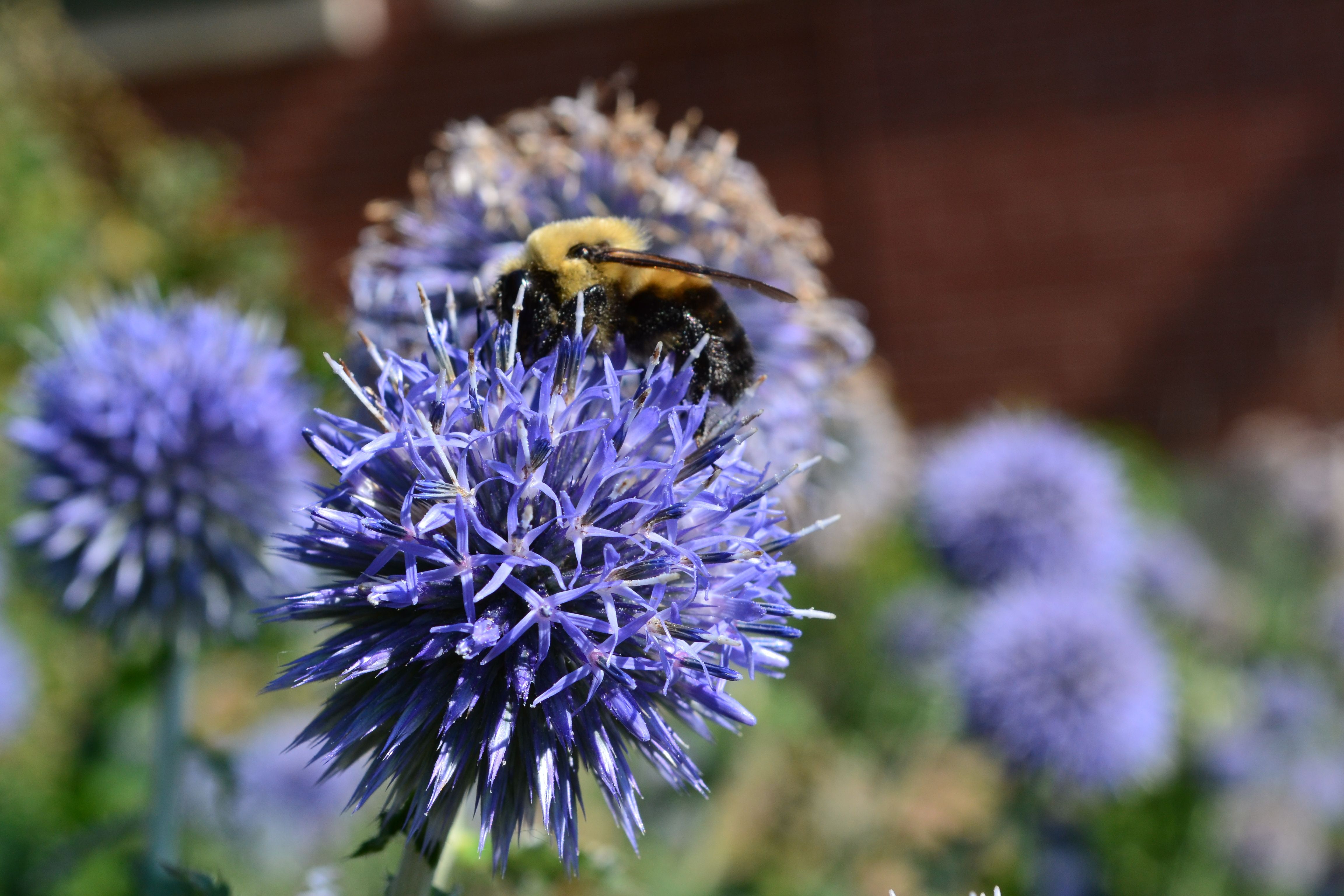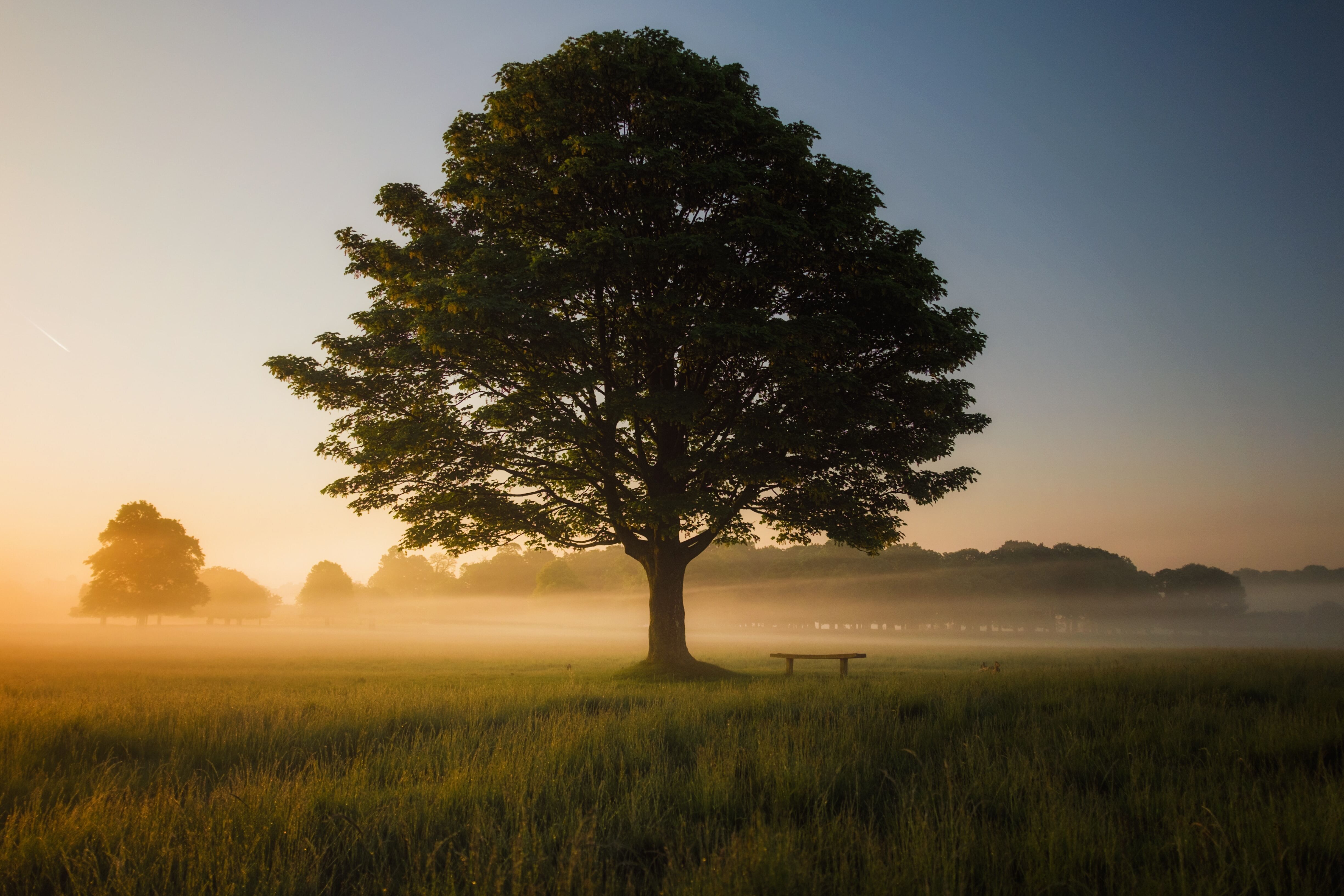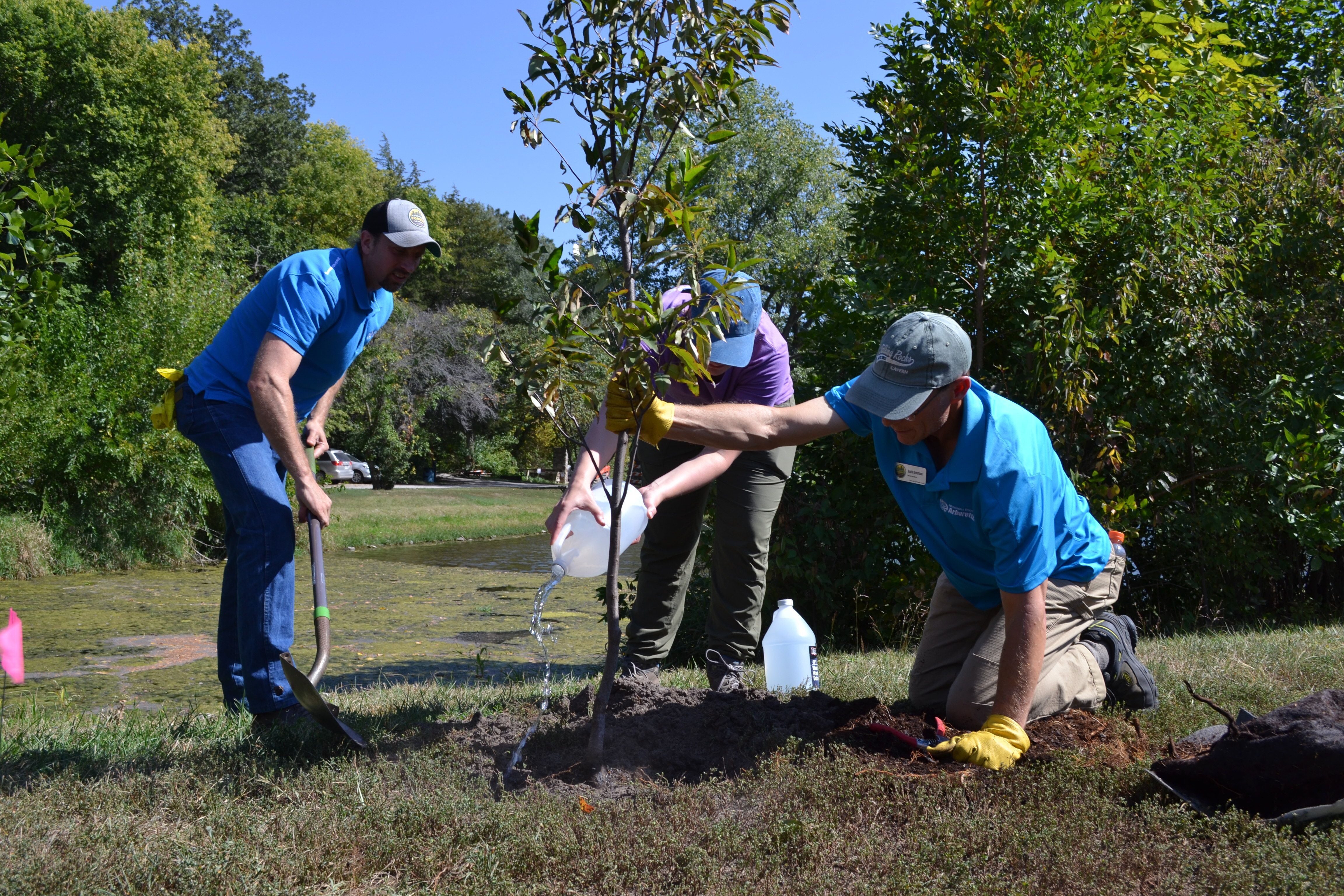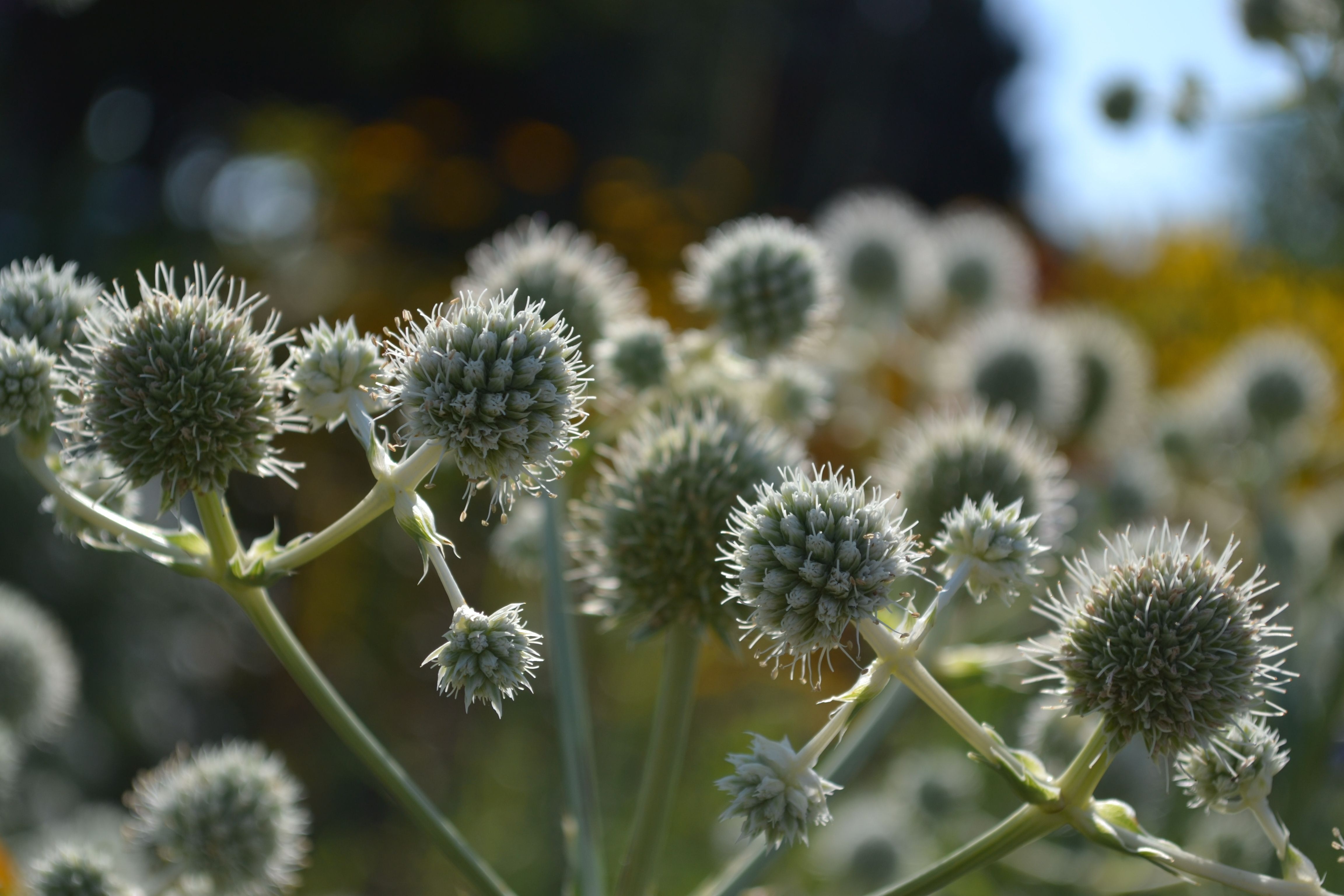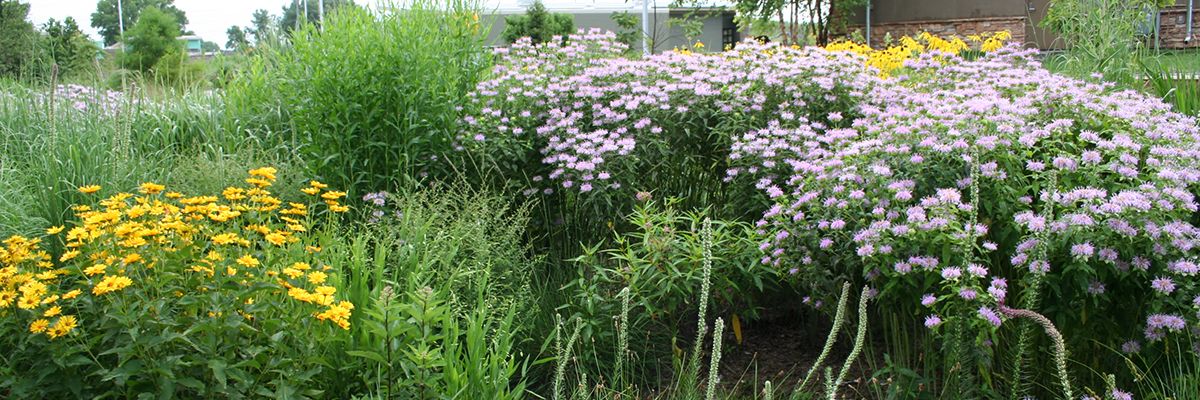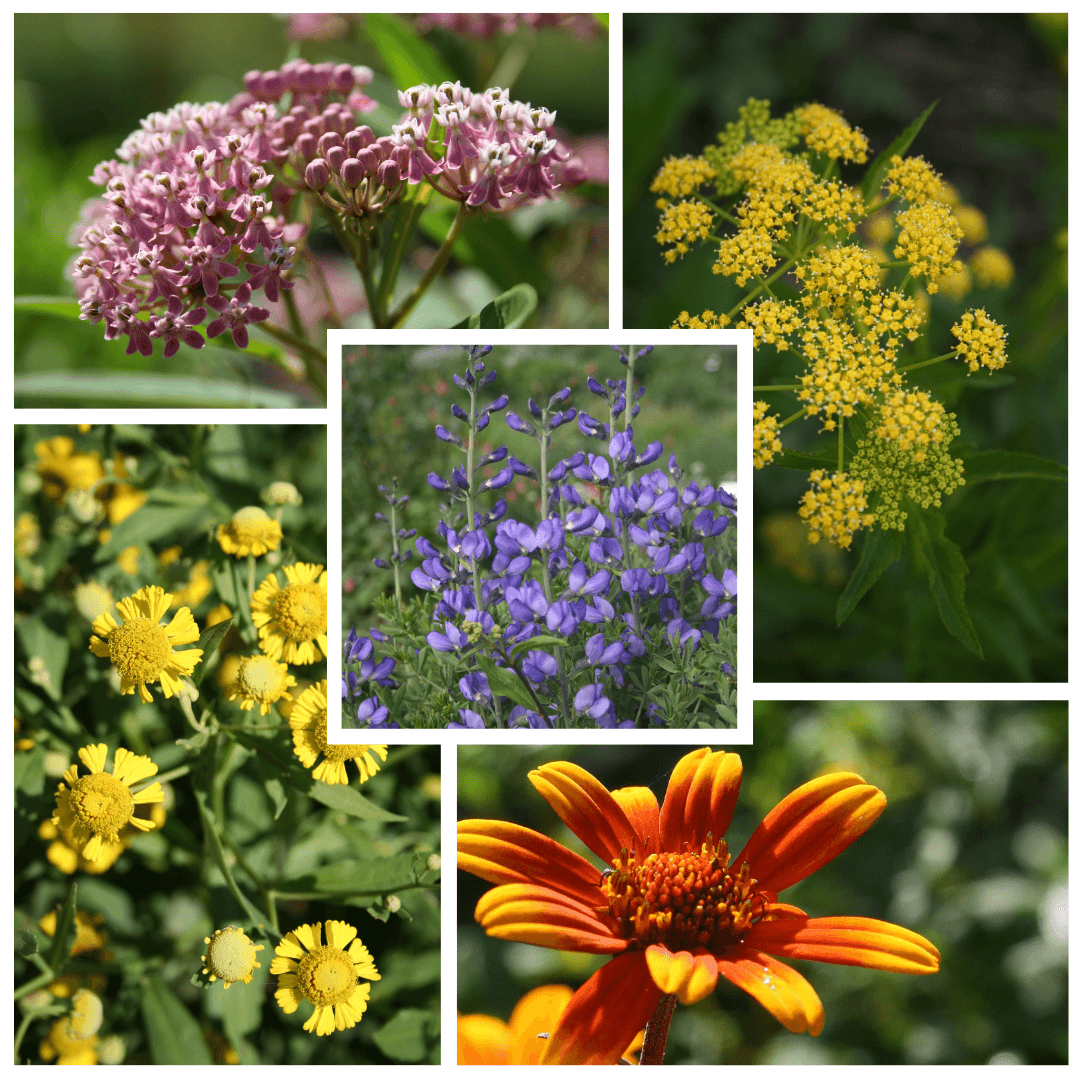
At the Nebraska Statewide Arboretum, we believe that gardening is more than a hobby—it's a way to cultivate beauty, support biodiversity and steward our natural resources. If you have areas that collect rainwater in your yard, one of the most effective ways to make the most of that water is to install a rain garden.
What Is a Rain Garden?
A rain garden is a thoughtfully placed, shallow depression that captures stormwater runoff from roofs, driveways, sidewalks and lawns. Instead of rushing into storm drains—carrying sediment, fertilizers, oil, trash and other pollutants along the way—this water is filtered through the soil and plants in the garden. The result: cleaner groundwater, reduced erosion and a healthier ecosystem in your own backyard.
Location, Location, Location
Before planting, take time to observe how water moves across your yard during and after a rain. The best place for a rain garden is where it can intercept runoff before it pools or causes problems. Avoid placing your rain garden in an already boggy or soggy area—these spots usually have underlying drainage issues. Instead, aim to slow and filter the water before it reaches those trouble zones.
Looking for step-by-step guidance? Check out our rain garden installation tips here.
What to Plant in a Rain Garden
Successful rain gardens rely on resilient plants—ones that can handle standing in water for 12–24 hours after a rainfall but also thrive in dry spells in between showers. Here are a few Nebraska-native powerhouses that fit the bill beautifully:
Swamp Milkweed (Asclepias incarnata)
This native perennial is a rain garden favorite. True to its name, swamp milkweed loves moist conditions and even tolerates heavy clay soils. But it's surprisingly versatile, thriving in average garden soil as well.
- Height: 3–4 feet
- Sun: Full to partial sun
- Bloom: Mauve-pink flowers in mid-summer
- Bonus: A nectar source for butterflies and hummingbirds, and a vital host plant for monarch butterfly larvae.
Golden Alexanders (Zizia aurea)
Golden Alexanders brings early color and pollinator activity to your garden. Its a member of the carrot family (think dill, parsley and parsnip) and boasts cheerful yellow, flat-topped flower clusters perfect for pollinators.
- Height: 1–3 feet
- Sun: Full sun to partial shade
- Soil: Moist to wet, even clay
- Bloom: Late May through mid-summer
- Bonus: Host plant for black swallowtail butterflies. Even after blooming, its purple seedheads add texture and interest.
Dwarf Blue Indigo (Baptisia minor)
Drought-tolerant and strikingly beautiful, dwarf blue indigo is slow to establish—but well worth the wait. Its deep root system ensures it stands up to both wet springs and dry summers.
- Height: 3–4 feet
- Sun: Full sun to part shade
- Bloom: Deep purple, lupine-like spikes in early summer
- Bonus: A nitrogen-fixing legume that helps improve soil health while feeding native bees and pollinators.
Sneezeweed (Helenium autumnale)
Despite its name, sneezeweed (also called Helen's flower) won’t make you sneeze! This vibrant wildflower supports pollinators late into the season, just when many other blooms are fading.
- Height: 3–5 feet
- Sun: Full sun
- Soil: Moist to wet soils
- Bloom: Bright golden-yellow flowers in late summer to fall
- Bonus: Excellent for supporting bees, butterflies, and beneficial insects in low-lying areas and bioswales.
False Sunflower (Heliopsis helianthoides)
Also called oxeye sunflower, this cheerful bloomer adds a sunny presence to any rain garden. It’s adaptable, long-blooming and provides nectar for pollinators from midsummer through fall.
- Height: 3–5 feet
- Sun: Full sun to part shade
- Soil: Tolerates clay and sandy soils
- Bloom: Yellow-orange daisy-like flowers with cone-shaped centers in midsummer through fall
- Bonus: Low-maintenance and ideal for naturalized plantings.
Whether you're looking to solve a drainage issue, support pollinators or simply add beauty to your yard, a rain garden is a smart and sustainable choice. With the right placement and plant selection, your garden will not only thrive—it will give back to the landscape in all the best ways.

